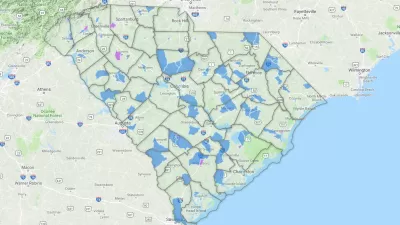The Brookings Institution has provided a data-driven examination of the subject of poverty in the United States, to provide the kind of policy nuance and detail missing from the 2016 presidential campaign.

Elizabeth Kneebone writes an article to illuminate a pressing policy issue that was largely absent from discussion on the campaign trail this year: poverty. Regardless of that lack of conversation, according to Courtin, "both parties do have some serious ideas about how to combat poverty."
Kneebone describes the two very different poverty approaches from each party:
Democratic presidential nominee Hillary Clinton has put forward a policy agenda that includes proposals such as increasing affordable housing options, addressing persistently poor places, and expanding tax credits for working families with children. While Donald Trump has yet to provide specifics on his antipoverty ideas, a proposed Republican playbook on poverty, opportunity, and upward mobility can be found in House Speaker Paul Ryan’s Better Way policy agenda, announced earlier this summer. The two agendas represent distinct visions of an antipoverty/pro-opportunity federal policy agenda and highlight potential elements ripe for bipartisan debate and action.
Following that explanation of the political parties' approach to poverty, Kneebone takes a deep dive into the existing data on poverty. The data reveals some surprising narratives and breaks down into a series of data-rich maps and infographics.
FULL STORY: Poverty crosses party lines

Alabama: Trump Terminates Settlements for Black Communities Harmed By Raw Sewage
Trump deemed the landmark civil rights agreement “illegal DEI and environmental justice policy.”

Planetizen Federal Action Tracker
A weekly monitor of how Trump’s orders and actions are impacting planners and planning in America.

How Atlanta Built 7,000 Housing Units in 3 Years
The city’s comprehensive, neighborhood-focused housing strategy focuses on identifying properties and land that can be repurposed for housing and encouraging development in underserved neighborhoods.

In Both Crashes and Crime, Public Transportation is Far Safer than Driving
Contrary to popular assumptions, public transportation has far lower crash and crime rates than automobile travel. For safer communities, improve and encourage transit travel.

Report: Zoning Reforms Should Complement Nashville’s Ambitious Transit Plan
Without reform, restrictive zoning codes will limit the impact of the city’s planned transit expansion and could exclude some of the residents who depend on transit the most.

Judge Orders Release of Frozen IRA, IIJA Funding
The decision is a victory for environmental groups who charged that freezing funds for critical infrastructure and disaster response programs caused “real and irreparable harm” to communities.
Urban Design for Planners 1: Software Tools
This six-course series explores essential urban design concepts using open source software and equips planners with the tools they need to participate fully in the urban design process.
Planning for Universal Design
Learn the tools for implementing Universal Design in planning regulations.
Caltrans
Smith Gee Studio
Institute for Housing and Urban Development Studies (IHS)
City of Grandview
Harvard GSD Executive Education
Toledo-Lucas County Plan Commissions
Salt Lake City
NYU Wagner Graduate School of Public Service





























